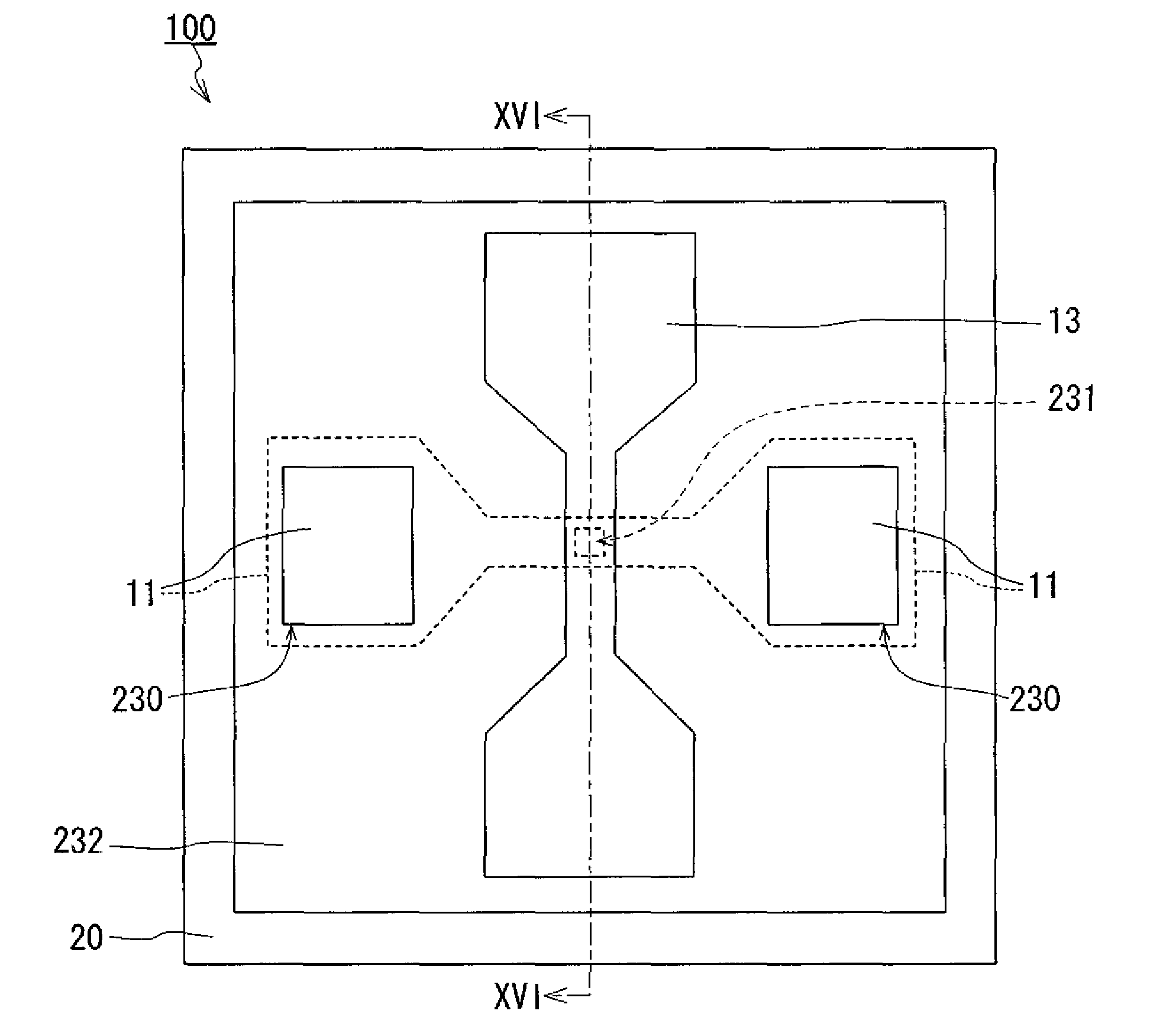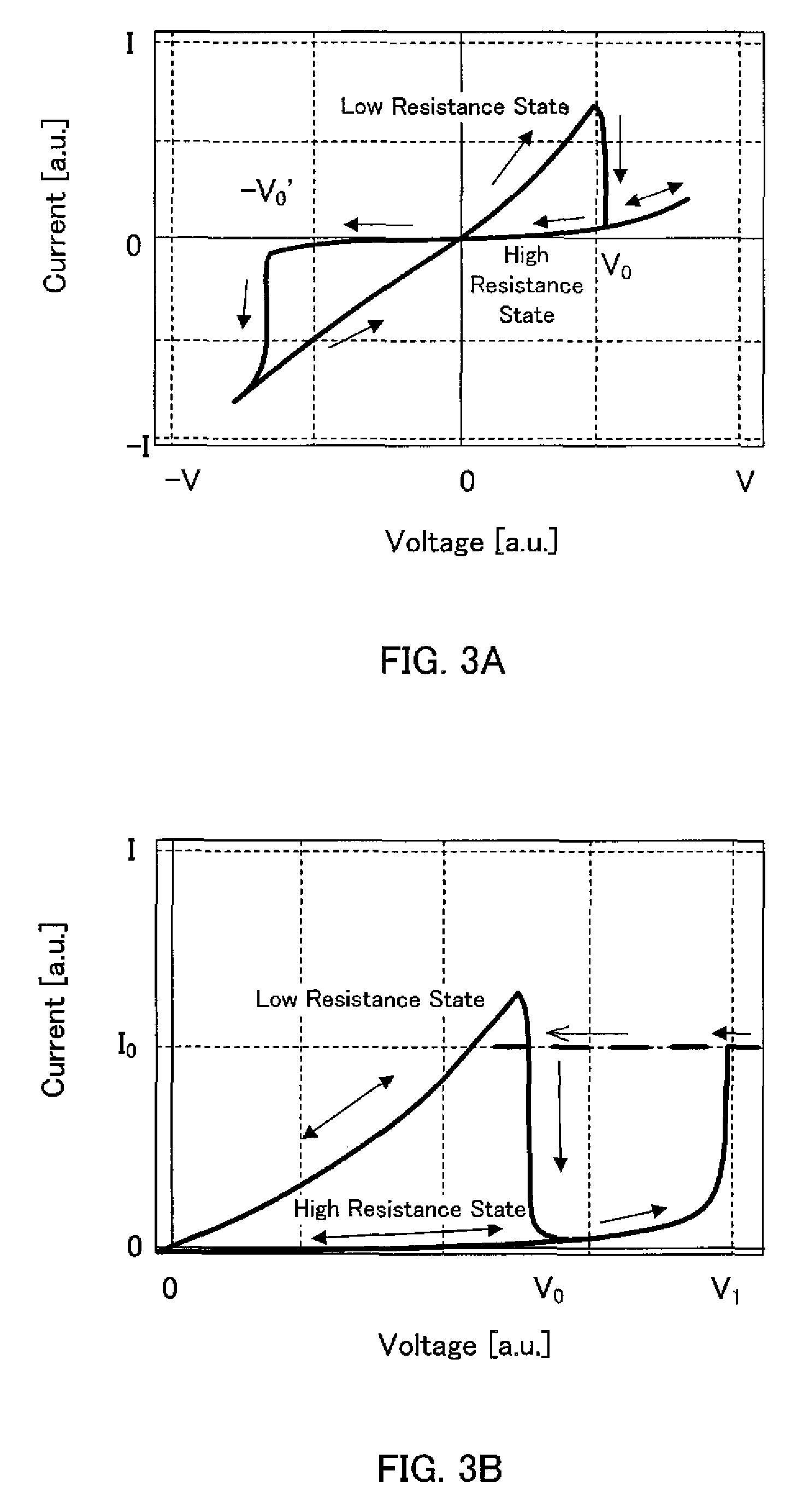Electro-resistance element, method of manufacturing the same and electro-resistance memory using the same
- Summary
- Abstract
- Description
- Claims
- Application Information
AI Technical Summary
Benefits of technology
Problems solved by technology
Method used
Image
Examples
example 1
[0127]In Example 1, a sample (an electro-resistance element) including a multilayer structure shown in FIG. 1 and having a form shown in FIG. 15 was fabricated for evaluating its resistance change characteristic. Example 1 employed aluminum oxide (hereinafter, also referred to as “Al—O”) for a material of a tunnel barrier layer 14 and iron oxide (hereinafter, also referred to as “Fe—O”) for a material of an electro-resistance layer 12.
[0128]The sample shown in FIG. 15 was fabricated in the following manner. FIG. 16 shows a cross-sectional view taken along the line XVI-XVI of FIG. 15.
[0129]First, a Si substrate with a thermally oxidized film (a SiO2 film) formed on its surface was prepared as a substrate 20. A lower electrode 11 having a predetermined shape was then formed on the substrate 20 using a metal mask. The lower electrode 11 was formed by stacking a TiAlN layer (200 nm in thickness) and a Pt layer (100 nm in thickness). The TiAlN layer was deposited by magnetron sputtering ...
example 2
[0151]In this Example, a memory element 200 including an electro-resistance element 100 as shown in FIG. 6 was fabricated for evaluating its resistance change characteristic. The tunnel barrier layer 14 employed an aluminum oxide layer (an Al—O layer) and the electro-resistance layer 12 employed an iron oxide layer (an Fe—O layer).
[0152]In the Example 2, the electro-resistance element 100 was formed on a substrate by a known method as shown in FIGS. 13A to 13G. The substrate employed a substrate having a first protective insulating film 103 and a MOS transistor formed thereon. The first protective insulating film 103 employed an ozone TEOS film planarized by CMP (400 nm in thickness).
[0153]A plug 27 formed on the first protective insulating film 103 was composed of a barrier metal 105 made of a titanium film and a titanium nitride film and a plug metal 106 made of tungsten.
[0154]A Ti—Al—N / Pt layer was deposited as a lower electrode layer 11a on that, followed by an Fe—O layer deposi...
example 3
[0165]In the Example 3, a memory element as shown in FIG. 14H was fabricated for evaluating its resistance change characteristic. In this Example, the tunnel barrier layer 14 employed a silicon oxide layer (a Si—O layer) and the electro-resistance layer 12 employed an iron oxide layer (an Fe—O layer).
[0166]In the Example 3, the electro-resistance element 100 and a memory element were formed on a substrate by a known method as shown in FIGS. 14A to 14H. The substrate employed a substrate having a first protective insulating film 103 and a MOS transistor formed thereon. The first protective insulating film 103 employed an ozone TEOS film planarized by CMP (400 nm in thickness).
[0167]First, a lower electrode layer 11a was deposited on the first protective insulating film 103 as shown in FIG. 14A. The hydrogen barrier layer 18 under the lower electrode layer 11a employed a SiN layer (200 nm in thickness). Next, the lower electrode layer 11a was patterned to form a second protective insu...
PUM
 Login to View More
Login to View More Abstract
Description
Claims
Application Information
 Login to View More
Login to View More - R&D
- Intellectual Property
- Life Sciences
- Materials
- Tech Scout
- Unparalleled Data Quality
- Higher Quality Content
- 60% Fewer Hallucinations
Browse by: Latest US Patents, China's latest patents, Technical Efficacy Thesaurus, Application Domain, Technology Topic, Popular Technical Reports.
© 2025 PatSnap. All rights reserved.Legal|Privacy policy|Modern Slavery Act Transparency Statement|Sitemap|About US| Contact US: help@patsnap.com



